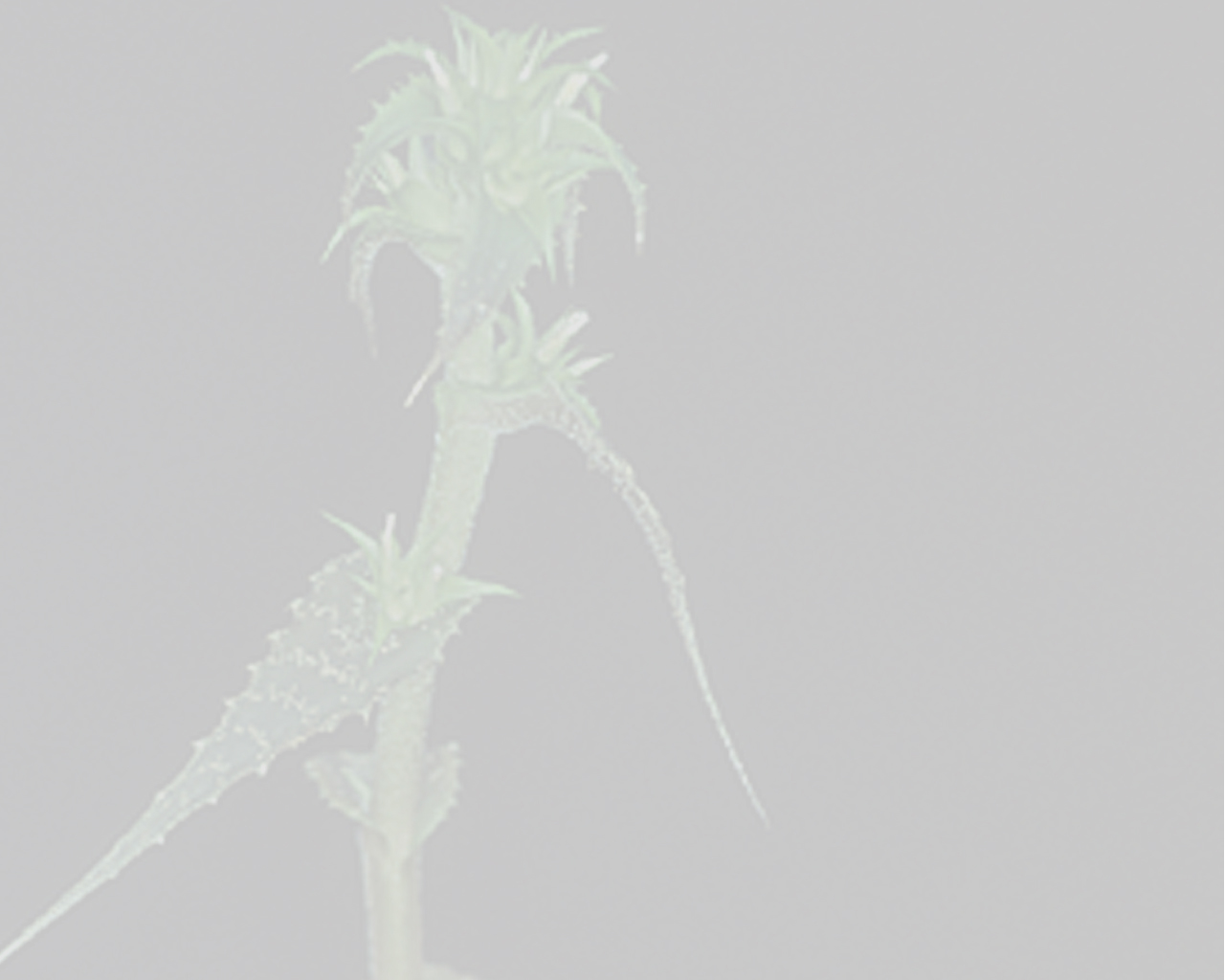

 Orthophytum itambense Versieux & Leme[as Orthophytum itambense Versieux & Leme,]
Orthophytum itambense Versieux & Leme[as Orthophytum itambense Versieux & Leme,]Diagnose: —Species nova Orthophytum supthutii E. Gross & Barthlott. affinis sed laminis foliorum supra albo-zonatis sepalis sublineris et etiam petalis albis base appendicibus brevioribus differt. Observations: —Orthophytum itambense Versieux & Leme is described and illustrated as a new species, with an endemic distribution restricted to Pico do Itambe State Park, Minas Gerais, Brazil. This new lithophytic taxon is closely related to 0. supthutii E. Gross & Bartlott due to the shape and texture of leaves, floral bracts with recurved apex, sessile inflorescence, and by the long tubular corolla. The new species differs from its closest relatives by having leaves white¬lepidote abaxially and adaxially, with trichomes forming white transverse cross-bands adaxially, nearly free sepals, white corolla, and shorter petal append¬ages (only to 4mm vs. to 7 mm in O. supthutii).
The number of species of Orthophytum Beer has greatly increased since the publication of the last monograph on subfamily Bromelioidiae (Smith & Downs, 1979). These authors recognized 17 species, while Luther (2004) lists 35 species for the genus, and the number is now elevated to 47 after studies by Leme (2004a, b), Leme and Machado (2005, 2006), Leme and Paula (2003, 2005), Wanderley and Conceicao (2006), and the new species proposed here. Despite the number of new taxa described in the past decades, a modern revision of the genus is still lacking.
Orthophytum is endemic to eastern Brazil, with the center of diversity along the Espinhaco range in Bahia (15 species) and Minas Gerais (7 species) states. Secondary centers occur in the northeastern portion of Minas Gerais state, where at least 13 species occur, restricted in inselbergs, and in the central-north portion of Espirito Santo (7 species). Two additional species range northeast into the adjacent states of Paraiba, Pernambuco, and Alagoas.
Orthophytum grows in sunny and dry habitats or on constantly humid rocks near streams and waterfalls in grasslands on rocky soils in cerrado, among rocks or on rock outcrops inside the dry woodland caatinga, as well as in the Atlantic Forest domains.
Orthophytum itambense can be distinguished from the most similar taxon, 0. supthutii in several characteristics as pointed out in the following key:
la. Leaf blade glabrous and lustrous on th adaxial surface; sepals unequally connate at base for 2-¬5 mm; petals orange-yellow, petal appendages 5 -7 mm long O. supthutii
lb. Leaf blade with trichomes forming white cross-bands on the adaxial surface: sepals nearly free, connate at base forca. 1 mm only; petals white, petal appendages 3-4 mm long.
O. itambense
Orthophytum supthutii may he misidentified with Cryptanthus schwackeanus Mez, in herbaria, although the latter can be distinguished from both O. supthutii and O. itambense by its elliptic petals connate by 2-¬3 mm without appendages.
Leaf anatomy has also indicated several differences that can be used to separate Orthophytum itambense from O. supthutii. First, the adaxial hypodermis of O. itambense has four to five layers, and the first two of these layers have thickened, lignified cell walls. The hypodermis of O. supthutii consists of five tosix layers of cells, and only the first one has cells with thickened, lignified walls. Second, in O. itambense the chloren¬chyma is located in the inner half of the mesophyll with seven to eight layers, and in O. supthutii, while it has similar chlorenchyma, there are 10 to 11 cell layers. Third, peltate trichomes in O. itambense have a stalk composed of three basal cells, while in O. supthutii it is composed of only two basal long cells. Finally, in the abaxial epidermis, stomata are projected in O. itambense (Fig. 2C), while they are only weakly projected in O. supthutii (Souza, pers. obs.).
Leme (2004a) proposed a provisional division for Orthophytum into two complexes and six subcom¬plexes of species, in which O. supthutii was segregated alone in subcomplea supthutii by its stemless habit, the similar color of the inner and outer leaves at anthesis, sessile inflorescence, and by the unusual bright orange-yellow petals. In fact, O. supthutii has been an intriguing species mainly because of its orange-yellow petals, with no obvious closely related taxon within the genus, and thus the basis for the Gross and Barthlott (1990) suggestion that a new subgenus be created for this species. The inclusion of O. itambense as the second species in this subcomplex supthutii provides new impetus for further analyses of these two unique taxa and a better understanding of' their position in the genus.Edited from (11-01-2015): Novon 17: 130-134.. (2007)